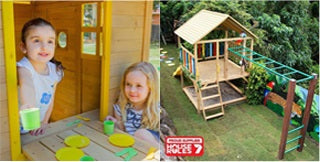The Blog
How to Properly Fit a Bike Helmet for Maximum Safety

Did you know that you can reduce the risk of a serious head injury on a bike by up to 70% by wearing a helmet? At Lifespan Kids, we believe in the importance of building safe cycling habits from a young age, so that wearing a helmet becomes second nature.
Cycling is such an important and exciting step in a child’s development, creating a sense of independence and building essential motor skills that they will carry with them later in life.
That’s why we’re here to run you through the proper techniques for fitting a bike helmet, so that you can be confident your child has the best protection possible as they venture out on two wheels.
Steps to a Snug Fit

Unfortunately, a poorly fitted helmet is about as useful as not having a helmet at all. Here’s a quick checklist to ensure you have the perfect fit:
- Choose the Right Size: A helmet for kids should fit snugly on the child’s head. Use a soft tape measure to measure the circumference of their head, just above the eyebrows. Compare the measurement to the size chart provided on the product page to find the best fit.
- Position the Helmet Correctly: Place the helmet on your child's head so it sits level, not tilted back or forward. Instinct will make them want to tilt the helmet back slightly, so make sure to explain that it should sit more forward than a hat normally would. The front edge of the helmet should rest just above the eyebrows.
- Adjust the Straps: Tighten the straps until they’re secure but comfortable. Make sure the chin strap is snug, allowing only one finger to fit between the strap and their chin.
- Use the Dial Fit System: Some helmets come with an adjustable dial system that helps customise the fit. This system is especially helpful if your child’s head grows or if you plan to pass the helmet to younger siblings.
Speaking of finding the right fit, make sure to also check out our guide on finding the correct bike size for your child.
Safety Stickers

Bike helmets will often come with certified safety stickers to prove that they’ve passed safety standards. In Australia, the AS/NZS 2063:2008 is the official standard for bike helmet design. At Lifespan Kids, all our bike helmets are certified for Australian safety standards, indicating a high level of protection and security.
Always ensure you are buying a helmet that has been safety certified.
Fasten Your Straps

Think of the helmet straps as the seatbelt for your child's head. Properly fastened straps are vital to keeping the helmet securely in place during an accident.
- Chin Strap: Fasten the chin strap and tighten it until it’s snug, ensuring that you can fit only one finger under the strap. This prevents the helmet from moving around or coming off during a fall.
- Side Straps: Adjust the side straps so that they form a "V" shape under your child’s ears, providing a secure fit and ensuring the helmet stays in place while they ride.
The Two Finger Rule

One of the simplest ways to check if your bike helmet is positioned correctly is by using the two-finger rule. After securing the straps, place two fingers horizontally between your child’s eyebrows and the helmet’s front edge. If the helmet is correctly positioned, it should be sitting no more than two fingers' width above their eyebrows. If you can fit more than two fingers, the helmet is too high and needs adjustment.
Take the Test
To ensure the helmet is secure and fits properly, you can perform the "shake and nod" test. Have your child shake their head vigorously. The helmet should stay in place, not move around or slide off. Then, ask your child to nod their head up and down. The helmet should stay firmly in place without tilting or shifting. If the helmet moves, adjust the straps or fit system until it stays securely on their head.
Conclusion

By following these simple fitting tips, you can rest easy knowing your child has the best protection in case of any accidents. Remember to check the safety stickers, fasten the straps securely and test the fit before each ride. With the right helmet, your child will be ready to ride with confidence and protection.
For more tips on cycling and family bike rides, check out our guide on family adventures on two wheels. Happy riding!














 Shop now, Pay Later
Shop now, Pay Later








